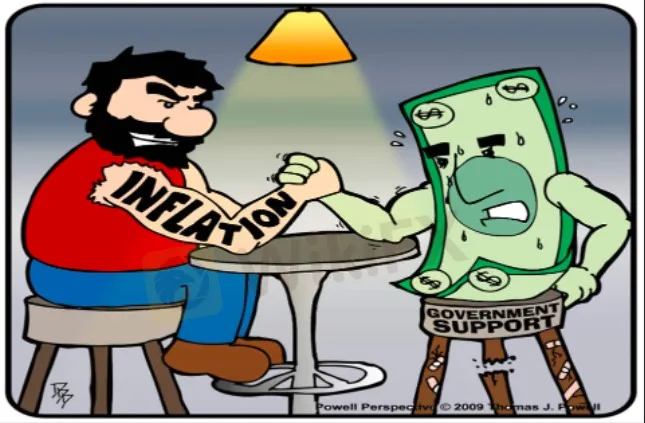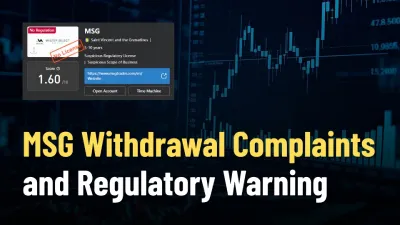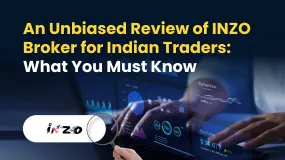简体中文
繁體中文
English
Pусский
日本語
ภาษาไทย
Tiếng Việt
Bahasa Indonesia
Español
हिन्दी
Filippiiniläinen
Français
Deutsch
Português
Türkçe
한국어
العربية
Despite skyrocketing inflation, the strong dollar supports gold prices.
Abstract:Because of the strength of the dollar, gold's traditionally positive performance in an inflationary and rising interest rate environment is hampered.
Click Here: After you read it, Daily Routine with WikiFx
Gold Gets Into The Action
The global commodities shock is increasing, and the 2/10 treasury yield curve – the differential between 2-year and 10-year treasury yields – became negative in early April. These have historically signaled a declining economy or recession. Early April saw gold and the dollar rise as traditional safe havens. On April 18, gold tested $2,000 an ounce with an intraday high of $1,998. On April 21, US Federal Reserve Chair Jerome Powell gave a strong message at an International Monetary Fund (IMF) session, indicating that more aggressive interest rate hikes are needed, presumably to battle inflation. On April 25, news of China's increasing COVID outbreak threatened to reduce demand for basic materials, causing gold to fall. Selling gold was misguided, as gold's drivers are distinct from other commodities. The volatility and falls in the Chinese stock and real estate markets have fueled investment demand for gold.
Dollar-Down
History texts teach us about inflation, the Cold War, and WWII. Ours was a world that would never allow such worldwide chaos or wickedness to occur again. Venezuela, Syria, and Myanmar could never happen in the West. Now we see that civilization isn't as evolved as we thought. The worst of human cycles is currently repeating, with war and nuclear threats. Gold is once again serving as a financial safe haven and wealth repository. Given the recent events, many gold supporters ask why the gold price isn't higher.

A secular bull market began in December 2015, when gold hit a low of roughly $1,050 an ounce. Gold's recent performance hasn't matched the 1970s and 2000s secular bull markets. In the present bull market, the pandemic has exacerbated some macroeconomic and geopolitical risks. One notable distinction may explain gold's poor performance thus far in this bull market. It was in a secular bear market from 1970 to 2000. From 1971 to 1978, the DXY plummeted 46%, and from 2002 to 2008, it fell 41%. The DXY has risen 5.2 percent since December 2015, and is currently testing a twenty-year high. While gold and the dollar often rise together in times of financial duress, their regular trend is downward. We think the strong dollar has slowed gold's current bull market ascent.
China and Europe seem to be leading the world into recession, while the Fed is raising rates. This is good news for the dollar for now. Gold has a lot of fans. The strong dollar is causing financial stress abroad, inflation appears to be out of control, and geopolitical and economic worries should keep driving gold. We expect gold prices will rise, but not to the levels seen in previous secular bull cycles.
Disclaimer:
The views in this article only represent the author's personal views, and do not constitute investment advice on this platform. This platform does not guarantee the accuracy, completeness and timeliness of the information in the article, and will not be liable for any loss caused by the use of or reliance on the information in the article.
Read more

Inzo Broker Review 2025: A Complete Look at Features, Costs and User Claims
Inzo Broker presents itself as a modern forex and CFD broker, started in 2021 and registered in Saint Vincent and the Grenadines. At first glance, it offers an attractive package for traders: access to the popular MetaTrader 5 (MT5) and cTrader platforms, different types of accounts for various budget levels, and a wide selection of assets to trade. These features are made to attract both new and experienced traders. However, a closer look shows a big difference between these advertised benefits and the real risks. The broker works under an offshore regulatory system, which gives limited protection to investors. More importantly, Inzo has collected many serious user complaints, especially about withdrawing funds and changing trading conditions unfairly. This mix of weak oversight and serious user claims creates a high-risk situation that potential clients must carefully think about. This review will break down these parts to give a clear, fact-based view.

MSG Withdrawal Complaints and Regulatory Warning
MSG (Master Select Group) withdrawals denied. Broker is unlicensed and unregulated. NFA license claim unverified.

An Unbiased Review of INZO Broker for Indian Traders: What You Must Know
INZO is a fairly new company in the online trading world. It started in 2021 and is registered in Saint Vincent and the Grenadines. Traders in India and around the world have noticed this broker because it offers access to popular trading platforms such as MetaTrader 5 (MT5) and cTrader. It also lets you trade many different things, such as foreign currencies, stocks, and digital currencies. The broker tries to be easy to use with features such as a low minimum deposit, which can be appealing to new traders. However, when you look more closely, the situation becomes more complicated. INZO operates as an offshore-regulated company, which brings certain risks that every trader needs to understand. Also, user feedback is very mixed - there are many serious complaints alongside some positive experiences. Read on this in-depth review of the broker.

Russian crypto millionaire couple found dismembered and buried in Dubai desert
A gruesome case has emerged involving a Russian couple living in the United Arab Emirates who went missing in early October and whose remains were recently discovered in a desert near Dubai. Roman Novak, a self-styled cryptocurrency “millionaire”, and his wife Anna had last been seen travelling to a supposed investor meeting in the UAE, but according to investigators were instead abducted and murdered after a ransom plot failed.
WikiFX Broker
Latest News
BASF CEO: EU CO₂ Trading Is A "Destruction Mechanism" For European Industry
Is Fyntura a Regulated Broker? A Complete 2025 Broker Review
PINAKINE Broker India Review 2025: A Complete Guide to Safety and Services
Is Inzo Broker Safe or a Scam? An Evidence-Based Analysis for Traders
Is Uniglobe Markets Legit? A 2025 Simple Guide to Its Safety, Services, and User Warnings
Is Forex Zone Trading Regulated and Licensed?
WikiEXPO Dubai 2025 “Welcome Party” Kicks Off Tonight!
He Trusted a WhatsApp Group and Lost RM659,000
Exness Restricted Countries List 2025 Explained
Zetradex Exposed: Withdrawal Denials, Account Freeze & Bonus Issues Hurt Traders
Currency Calculator




